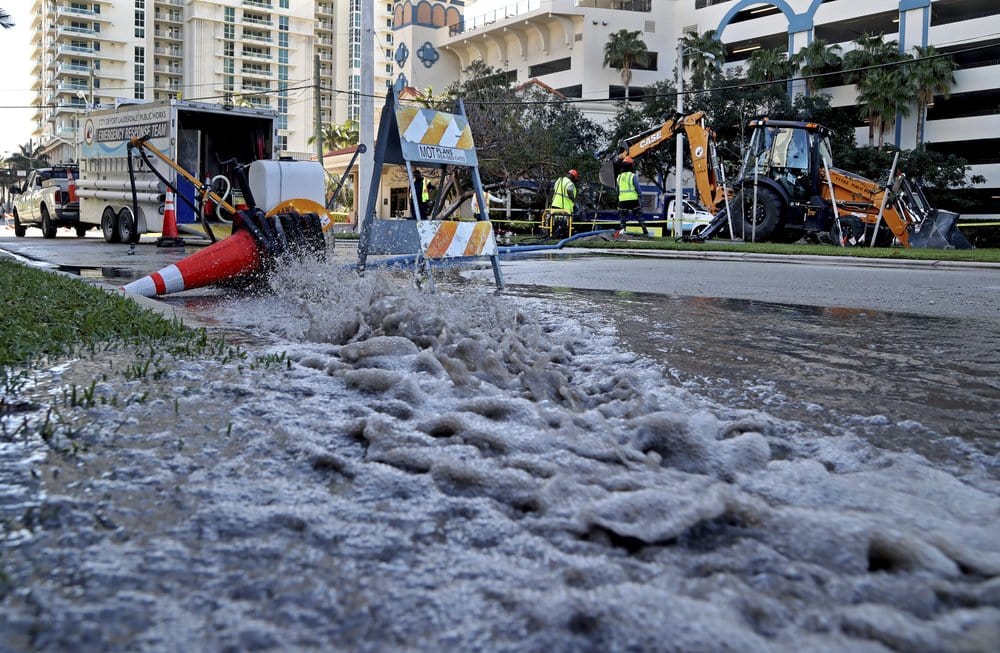
Florida waterways, particularly those in South Florida, are prone to bacterial exposure due to aging or malfunctioning wastewater systems, surface runoff and animal byproducts.
In a given year, Miami-Dade, Broward and Palm Beach counties issue multiple no-swim advisories after beach waters come awash in thousands of gallons of sewage.
Mass die-offs of marine life, known colloquially as “fish kills,” are a yearly occurrence as well. Local officials blame an overabundance of “nutrients” — code speak, often, for fecal matter from busted pipes and fertilizer.
Exposure to elevated wastewater bacteria can cause a host of health maladies. But today, Florida has no statewide system to notify the public of an emergent waterway health risk.
Sen. Lori Berman and Reps. Lindsay Cross and Peggy Gossett-Seidman aim to fix that through bipartisan legislation they’ve named the “Safe Waterways Act.”
The measure (SB 338, HB 165) would move reporting and communication responsibilities among state agencies and the public to the Department of Environmental Protection (DEP).
It would create a state system to send digital warnings, require local governments to publicly notify DEP and resample waters within 24 hours of an alarming test, and mandate closures and clear, uniform signage at affected areas.
Berman, a Boca Raton Democrat, said it’s a common-sense change long overdue.
“The public has a right to know whether the beaches and waterways they’re swimming in are infested with fecal bacteria, (and) Florida is failing in its responsibility to promptly inform the public and protect their health,” she said in a statement. “All we’re asking for is transparency in water quality and consistency in public notification so residents and tourists can safely enjoy our world-famous waters.”
The bills, which await a first hearing in their respective chambers, set forth a timeline for transfers of responsibility from the Department of Health (DOH) to DEP.
By July 1, DOH would have to provide a report to the Governor, Senate President and House Speaker detailing the average number of bacteriological samples it collects yearly, the number of health advisories localities issue yearly, the number of department employees who work on sampling and the costs associated with the work.
By Dec. 31, 2024, DOH and DEP would have to submit recommendations for the transfer of related responsibilities, resources and personnel. The transfer would then occur within six months.
Berman and Gossett-Seidman, a Highland Beach Republican, filed similar bills for the 2023 Legislative Session. Neither received a hearing.
Gossett-Seidman said the state needs a central reporting method like 911 to more efficiently alert people about a waterway health risk. She floated using the three-number code 426, symbolizing H2O.
“Too often the public discovers the waters are contaminated days after they went to the beach,” she said in a statement. “The complex reporting system between cities, counties and states is ineffective and outdated.”
The “Safe Waterways Act” is something of a sequel and nominal nod to the bipartisan “Clean Waterways Act” of 2020. Sponsored by Sen. Debbie Mayfield and Rep. Bobby Payne, the law among other things moved water monitoring from the DOH to the DEP and authorized the agency to preemptively inspect water treatment systems.
When Gov. Ron DeSantis signed it June 30, 2020, he called the measure “probably the most comprehensive bill we’ve seen in quite some time.”
More can and should be done now, Cross said.
“As our state continues to grow,” she said, “we must invest in the infrastructure and pass proactive policies like this that prevent water pollution and protect human health.”




2 comments
Julia
December 8, 2023 at 5:23 pm
I get paid more than $120 to $130 every hour for working on the web. I found out about this activity 3 months prior and subsequent to joining this I have earned effectively $15k from this without having internet working abilities
Copy underneath site to check it…………………. careershome79.blogspot.com
tom palmer
December 8, 2023 at 7:13 pm
Fish kills in marine waters are usually caused by red tide outbreaks that are associated with nutrient pollution. In freshwater water bodies, the cause is low oxygen levels that is caused by nutrient pollution and the die off of the consequent algae during cloudy days.
Comments are closed.